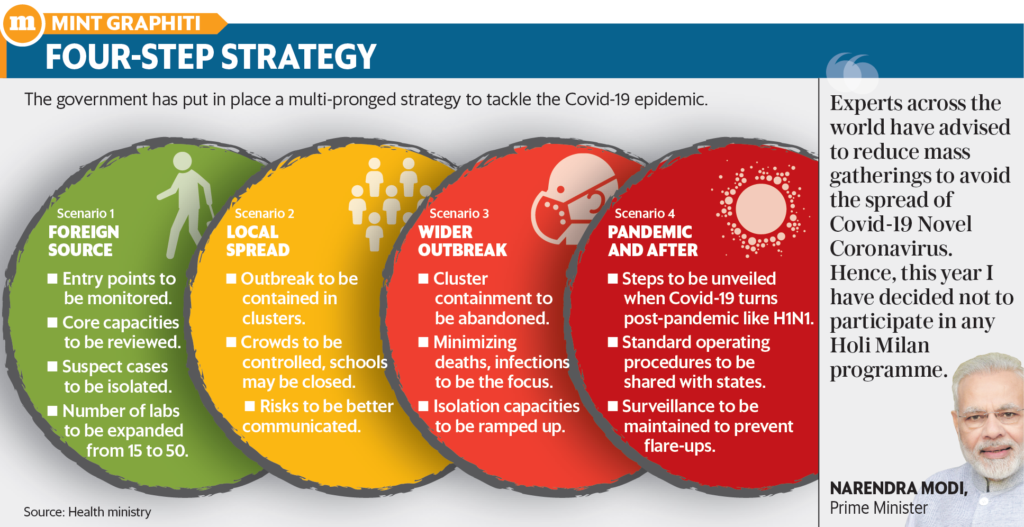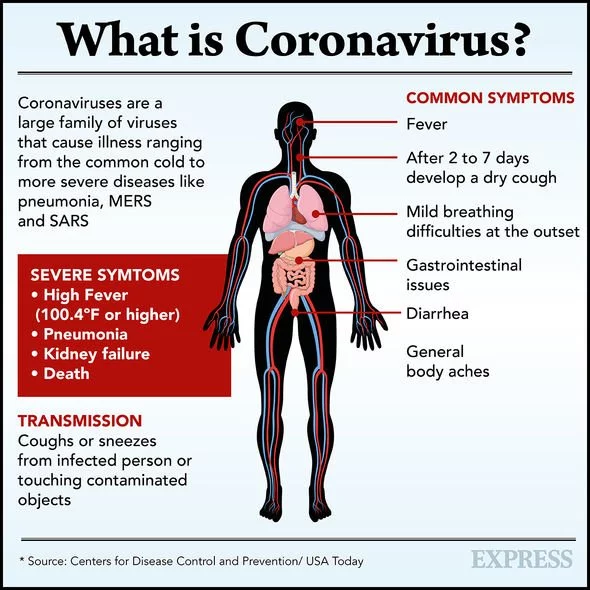Focus: GS-III Science and Technology, Prelims
Why in news?
- COVID-19 Cases rise to 29 in India, of which 2 cases with high viral load were detected in Telangana.
- The infection broke out in China’s Wuhan city in December 2019 and has spread to over 60 countries, killing more than 3,000 and infecting over 90,000.
- COVID-19 outbreak has killed 19 people in Iran.
Spread of Coronavirus in India
- India reported the first confirmed case of the coronavirus infection on 30 January 2020 in the state of Kerala.
- The first three Indians tested positive for coronavirus are from Kerala and have been discharged, but home-quarantined.
- Another case was confirmed in the national capital Delhi, and the another a Bengaluru techie in Telangana.
- Italians touring in India have been tested positive for Covid-19 coronavirus. They have been quarantined at the Chawla Camp in New Delhi.
How is India dealing with it?

- India, with a significant rise in COVID-19 cases, will start universal screening at all international airports.
- Thermal Imagery equipment as well as Mandatory Declaration Forms (of places visited by tourists/travelers) will be used to screen All passengers of International Flights.
- Health authorities will check and sensitize every household within a 3 Kilometer radius of the house of the infected person.
What is COVID-19?
Coronaviruses are a large family of viruses, including some that cause the common cold to some that cause major diseases such as the Severe Acute Respiratory Syndrome (SARS) and the Middle East Respiratory Syndrome (MERS).
A novel coronavirus (CoV) [COVID-19] is a new strain of coronavirus.
The disease caused by the novel coronavirus first identified in Wuhan, China, has been named coronavirus disease 2019 (COVID-19) – ‘CO’ stands for corona, ‘VI’ for virus, and ‘D’ for disease. Formerly, this disease was referred to as ‘2019 novel coronavirus’ or ‘2019-nCoV.’
How does the novel coronavirus spread?
The virus is transmitted through
- Direct contact with respiratory droplets of an infected person (generated through coughing and sneezing)
- Touching surfaces contaminated with the virus.
The virus may survive on surfaces for several hours, but simple disinfectants can kill it.

What are the Symptoms of Coronavirus?
- Signs and symptoms of COVID-19 may appear two to 14 days after exposure and can include:
- Fever
- Cough
- Shortness of breath or difficulty breathing
- The severity of COVID-19 symptoms can range from very mild to severe.
- People who are older or have existing medical conditions, such as heart disease, may be at higher risk of serious illness.
- This is similar to what is seen with other respiratory illnesses, such as influenza.
How to prevent Coronavirus infection?
- Although there is no vaccine available to prevent infection with the new coronavirus, you can take steps to reduce your risk of infection. WHO and CDC recommend following the standard precautions for avoiding respiratory viruses:
- Wash your hands often with soap and water, or use an alcohol-based hand sanitizer.
- Cover your mouth and nose with your elbow or tissue when you cough or sneeze.
- Avoid touching your eyes, nose and mouth if your hands aren’t clean.
- Avoid close contact with anyone who is sick.
- Avoid sharing dishes, glasses, bedding and other household items if you’re sick.
- Clean and disinfect surfaces you often touch.
- Stay home from work, school and public areas if you’re sick.
- CDC doesn’t recommend that healthy people wear a facemask to protect themselves from respiratory illnesses, including COVID-19. Only wear a mask if a health care provider tells you to do so.
- WHO also recommends that you:
- Avoid eating raw or undercooked meat or animal organs.
- Avoid contact with live animals and surfaces they may have touched if you’re visiting live markets in areas that have recently had new coronavirus cases.




